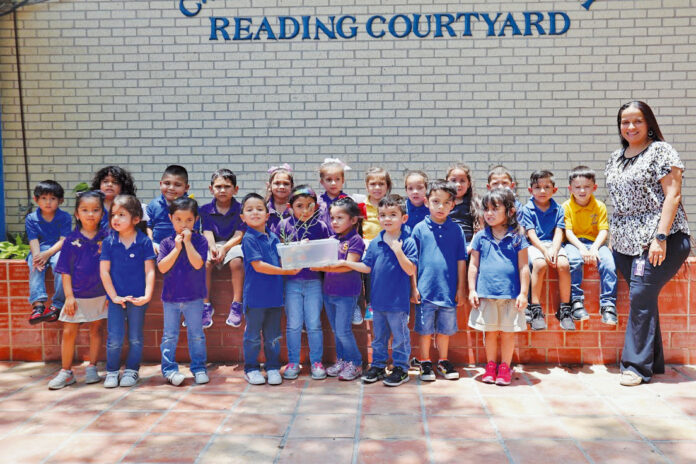SAN BENITO — The metamorphic life.
The changing life.
Children at Sullivan Environmental Science Academy leaned close to the container and saw this transformation again as they have so many times in the past few weeks.
A couple of painted lady butterflies gently flexed their wings, while others reclined in mid-transition in their chrysalises, awaiting their moment to emerge.
“ Who can tell me what the red paint was?” asked Cora Mendez, a pre-kindergarten teacher, referring to the tissue left over after a butterfly emerges from its chrysalis.
“ Merconium!” shouted the 4 and 5-year-old kids who’d studied the life cycle of the painted lady.
Sullivan is in the process of becoming an environmental science academy and, as such, teachers were asked to get a classroom pet to augment studies in the sciences. Some brought in hamsters and gerbils, while others brought snakes, rabbits, turtles and beta fish.
“I decided I’d do butterflies,” Mendez said. “I went ahead and ordered some caterpillars and the children were able to see.”
Her young scientists quickly became enthralled by the spectacle unfolding before their very eyes, which began with 12 caterpillars gorging themselves on thistle.
“Eleven of the caterpillars were able to turn into chrysalises, one did not,” she said. “They were able to see and journal daily the life cycle of the butterfly and observe it in the classroom.”
The students’ journals convey their excitement about the project, with squares filled with pictures of chrysalises, butterflies, caterpillars — the whole journey.
Their vocabulary evolved along with their understanding of life processes. Not only is merconium a familiar word now, they can also tell you that frass is the waste product of insects, that the proboscis is the feeding tube of butterflies, and they use it to obtain nectar.
“I learned about the exoskeleton,” said Keira Salazar, 5. “The exoskeleton is from the skin of the caterpillar when it turns into a chrysalis. I really like the painted lady butterflies.”
Mendez has been delighted by the response of the students.
“They love them,” she said. “They don’t see them as little bugs. They get to observe the caterpillars when I put them on the carpet or on the floor and they get to sit there and just watch them and observe them with a magnifying glass.”
She recalled one endearing moment when a little boy was watching a caterpillar.
“Miss, they’re so beautiful,” he told her.
Obviously, they’ve become something more than just bugs.
“Raising them, there’s something beautiful and amazing,” she said. “Since then they’re always finding caterpillars out there in the real world, and it’s just amazing to them. I love the fact that they got to see every single piece of the process.”
The world they’ve seen can perhaps be perceived as a mirror image of a young soul that experiences a constant process of change as it sees more, experiences more, and learns more.





